El Topo
7.6 /10 1 Votes7.6
Language Spanish Duration Country United StatesMexico | 7.6/10 IMDb Genre Western Cinematography Rafael Corkidi Language Spanish | |||||||||||||||||||||||||||||||||
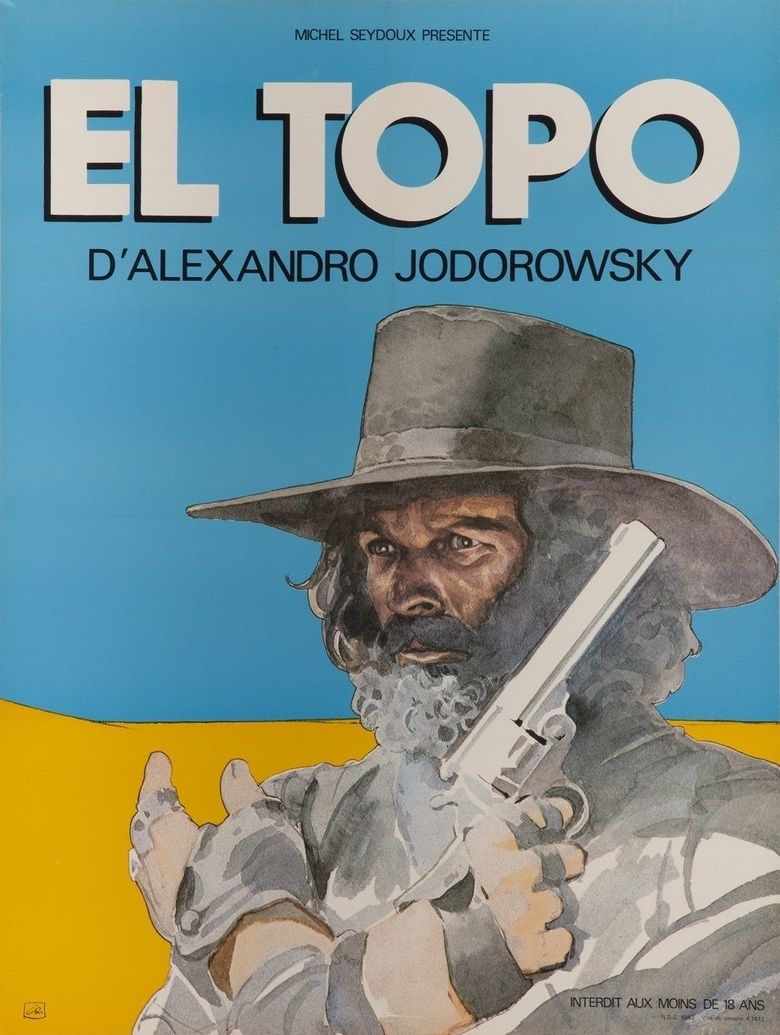 | ||||||||||||||||||||||||||||||||||
Release date December 18, 1970 (1970-12-18) Cast Alejandro Jodorowsky (El Topo), (Son of El Topo), José Legarreta (Dying Man), Alfonso Aráu (Bandit), José Luis Fernández (Bandit), (The Colonel)Similar movies Knock Knock , Django Unchained , All Ladies Do It , The Boy Next Door , Cheeky , The Voyeur Tagline The Definitive Cult Spaghetti Western | ||||||||||||||||||||||||||||||||||
El topo official trailer alejandro jodorowsky
El Topo (English translation: "The Mole") is a 1970 Mexican western drama film written, scored, directed by and starring Alejandro Jodorowsky. Characterized by its bizarre characters and occurrences, use of maimed and dwarf performers, and heavy doses of Christian symbolism and Eastern philosophy, the film is about the eponymous character – a violent, black-clad gunfighter – and his quest for enlightenment.
Contents
- El topo official trailer alejandro jodorowsky
- Plot
- Cast
- Controversy
- Reception
- Influence
- Release
- Home video
- Sequel
- References
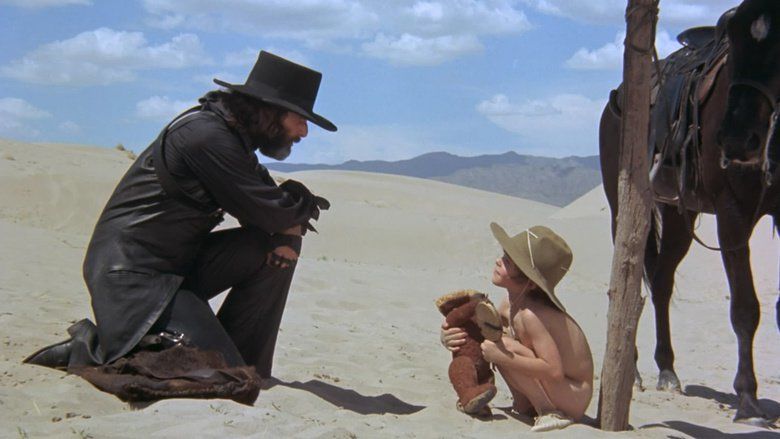
Plot

El Topo is traveling through a desert on horseback with his naked young son, Hijo. They come across a town whose inhabitants have been slaughtered, and El Topo hunts down and kills the perpetrators and their leader, a fat balding Colonel. El Topo abandons his son to the monks of the settlement's mission and rides off with a woman whom the Colonel had kept as a slave. El Topo names the woman Mara, and she convinces him to defeat four great gun masters to become the greatest gunman in the land. Each gun master represents a particular religion or philosophy, and El Topo learns from each of them before instigating a duel. El Topo is victorious each time, not through superior skill but through trickery or luck.
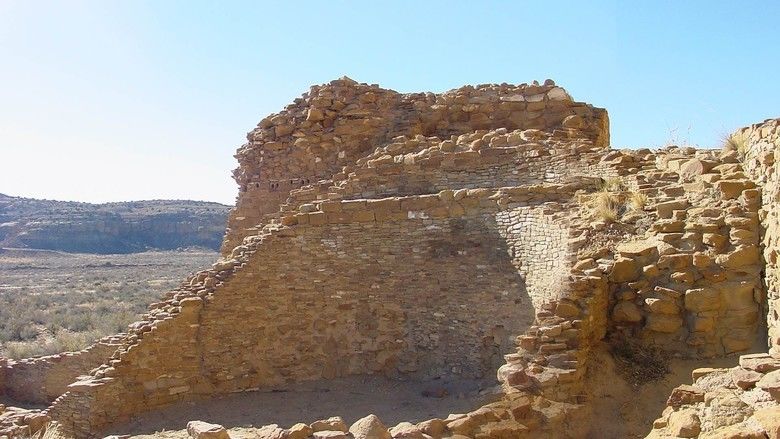
After the first duel, a black-clad woman with a male voice finds the couple and guides them to the remaining gun masters. As he kills each master, El Topo has increasing doubts about his mission, but Mara persuades him to continue. Having killed all four, El Topo is ridden with guilt, destroys his own gun and revisits the places where he killed those masters, finding their graves swarming with bees. The unnamed woman confronts El Topo and shoots him multiple times in the manner of stigmata. Mara then betrays him and rides off with the woman, while El Topo collapses and is carried away by a group of dwarves and mutants.
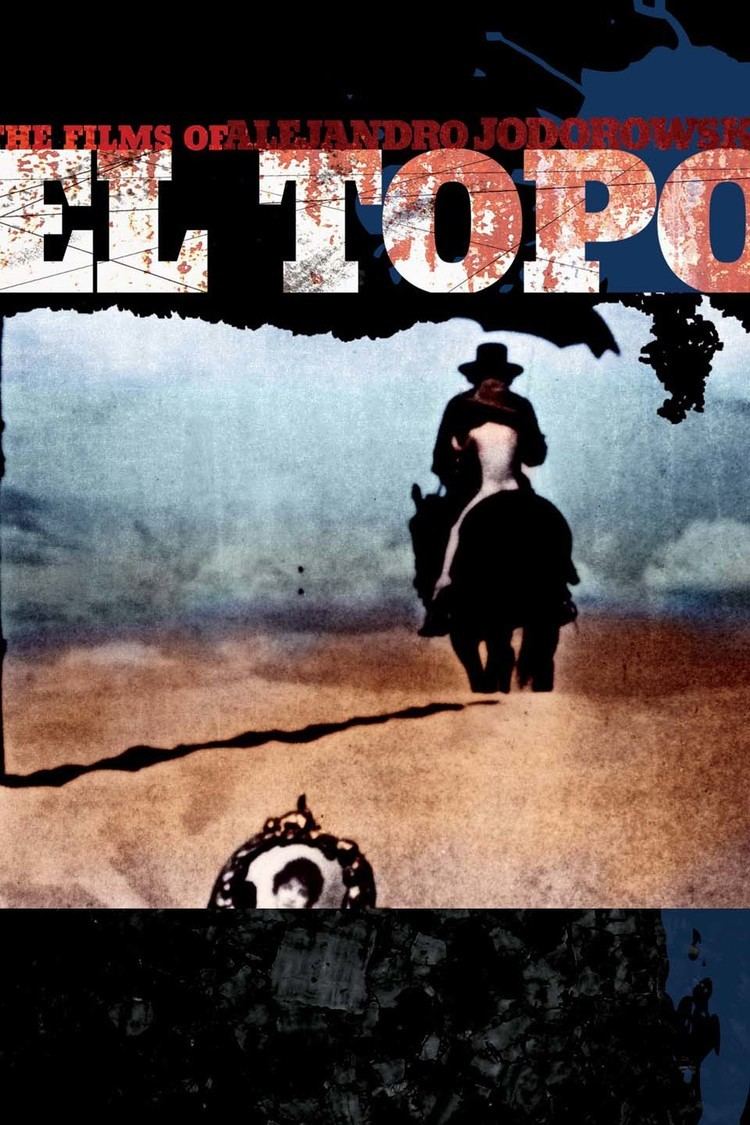
El Topo awakens in a cave to find that the tribe of deformed outcasts have taken care of him and come to regard him as a God-like figure while he has been asleep and meditating on the gun masters' "four lessons". The outcasts dwell in a system of caves which have been blocked in — the only exit is out of their reach due to their deformities. When El Topo awakens, he is "born again" and decides to help the outcasts escape. He is able to reach the exit and, together with a dwarf girl who becomes his lover, performs for the depraved cultists of the neighboring town to raise money for dynamite to assist in digging a tunnel on one side of the mountain where the outcasts have effectively been kept imprisoned.

Hijo, now a young monk, arrives in the town to be the new priest, but is disgusted by the perverted form of religion the cultists practice – notably symbolized by the frequent display of a basic line drawing of the Eye of Providence, which most likely alludes to its appearance on U.S. currency, and as a representation of capitalism and the "almighty dollar". The cultists' violent preoccupation with guns, from their church "ritual" through to the film's bloody climax, likewise suggests Jodorowsky's view of America as a nation "hell-bent" on murder and mayhem at the height of the Vietnam War when the film was first released.
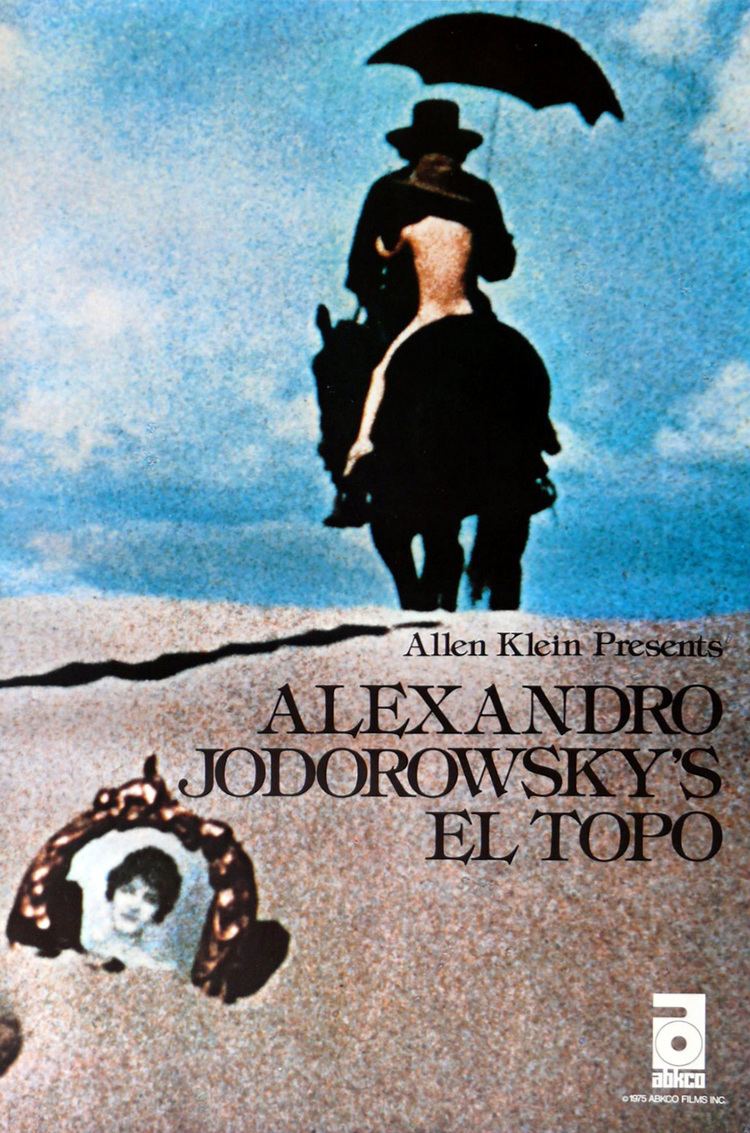
Despite El Topo's great change in appearance Hijo recognizes him and threatens to kill him on the spot for abandoning him as a child, but agrees to wait until he has succeeded in freeing the outcasts. Hijo grows impatient at the time the project is taking, and begins to work alongside El Topo to hasten the moment when he will kill him. At the point when Hijo is ready to give up on finishing the tunnel, El Topo breaks through into the cave. The tunnel has been completed, but Hijo finds that he cannot bring himself to kill his father.
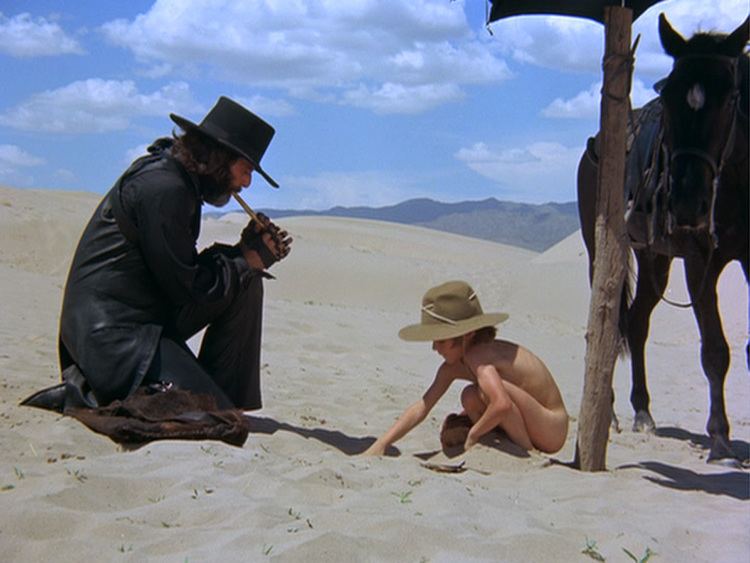
The outcasts come streaming out, but as they enter the town, they are shot down by the cultists. El Topo helplessly witnesses his community being slaughtered and is shot himself. Ignoring his own wounds, he massacres the cultists, then takes an oil lamp and immolates himself. His girlfriend gives birth at the same time as his death, and she and his son make a grave for his remains. This becomes a beehive like the gun masters' graves.
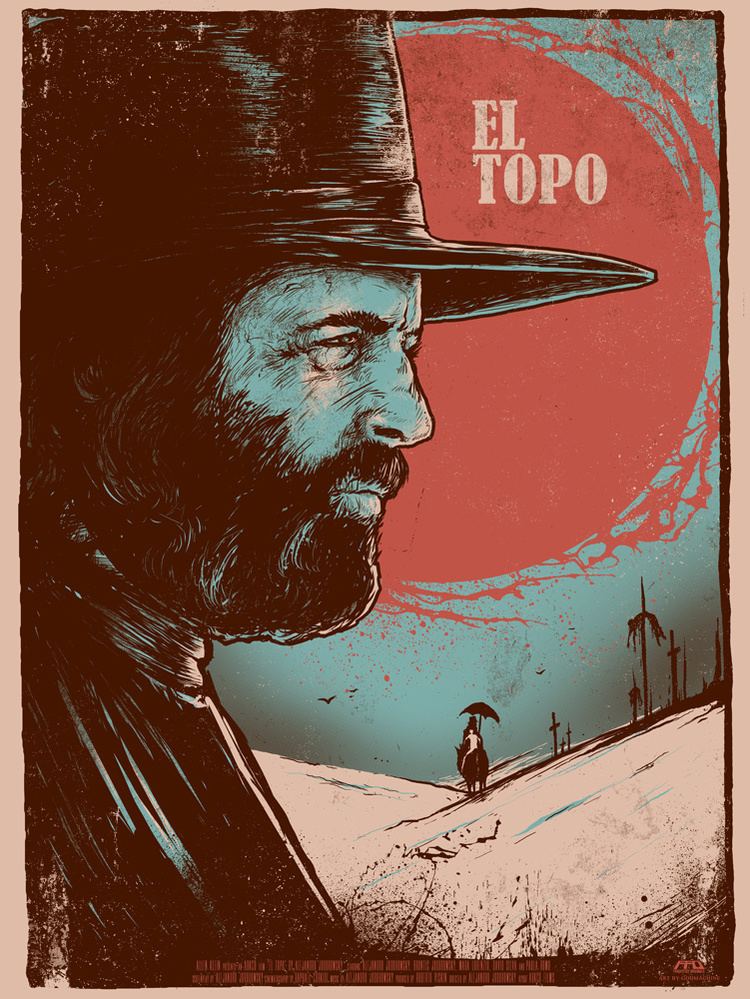
El Topo's son, girlfriend, and baby ride off on horseback, the son now wearing his father's black gunfighter clothes.
Cast
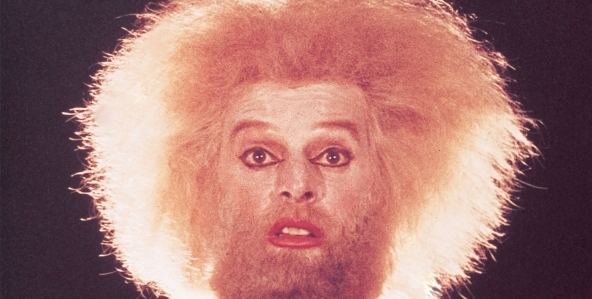
Controversy
In regard to the filming of the rape scene, Jodorowsky said,
When I wanted to do the rape scene, I explained to [Mara Lorenzio] that I was going to hit her and rape her. There was no emotional relationship between us, because I had put a clause in all the women's contracts stating that they would not make love with the director. We had never talked to each other. I knew nothing about her. We went to the desert with two other people: the photographer and a technician. No one else. I said, 'I'm not going to rehearse. There will be only one take because it will be impossible to repeat. Roll the cameras only when I signal you to.' Then I told her, 'Pain does not hurt. Hit me.' And she hit me. I said, 'Harder.' And she started to hit me very hard, hard enough to break a rib... I ached for a week. After she had hit me long enough and hard enough to tire her, I said, 'Now it's my turn. Roll the cameras.' And I really... I really... I really raped her. And she screamed."
He went on to state, "Then she told me that she had been raped before. You see, for me the character is frigid until El Topo rapes her. And she has an orgasm. That's why I show a stone phallus in that scene . . . which spouts water. She has an orgasm. She accepts the male sex. And that's what happened to Mara in reality. She really had that problem. Fantastic scene. A very, very strong scene."
Reception
The film was selected as the Mexican entry for the Best Foreign Language Film at the 44th Academy Awards, but was not accepted as a nominee.
Phil Hardy, in his Encyclopedia of Western Movies (1985), wrote of El Topo:
Rather in the manner of Federico Fellini, whose self-conscious conflation of the roles of charlatan and ringmaster of the unconscious Jodorowsky apes, the film is a breathtaking concoction of often striking, but more often ludicrous, images. The result is a movie that, though it impressed many at the time of its original release, in retrospect is clearly a minor, albeit often very funny work.
Some critics, including Gary Arnold of The Washington Post and Times-Herald, were offended by the film's visuals. Arnold wrote of the film:
There's not enough art to justify the sickening reality of Jodorowsky's artistic method. The meaning of the film is not to be found in the mystical camouflage of the gunfighter-turned-guru-and-martyr (for what, one wonders? Evidently self-aggrandizement rather than the well-being of his congregation of the deformed), but in the picturesque horrors and humiliations.
The visuals were the main point of contention amongst the film's critics, who debated if the sequences and montage were meaningful or merely exploitative. Concerning the symbolism within the film, Vincent Canby of The New York Times wrote, "They're all there, in a movie that is all guts (quite literally) but that has no body to give the guts particular shape or function." Canby found the film to be a con. Gene Siskel of the Chicago Tribune commented on how the visuals were perceived within the framework of drug culture. Siskel's review states, "Under the influence, El Topo becomes a violent, would-be erotic freakshow, and that, I suppose, can be very heavy. For others, it is enough to make one yawn."
Other critics, however, remain more enthusiastic about the film. For example, Roger Ebert includes El Topo in his Great Movies series.
Peter Schjeldahl, writing for the New York Times, described the film as "a very strange masterpiece". He says, "On first blush it might seem no more than a violent surreal fantasy, a work of fabulous but probably deranged imagination. Surreal and crazy it may be, but it is also (one realizes the second time through) as fully considered and ordered as fine clockwork."
Influence
Noteworthy figures said to be fans of the film include directors David Lynch, Nicolas Winding Refn and Samuel Fuller; video game writer and director Suda 51; actors Peter Fonda and Dennis Hopper; comedians The Mighty Boosh and Patton Oswalt; and performers Bob Dylan, Roger Waters, Marilyn Manson, Jarvis Cocker, Peter Gabriel, George Harrison, Lucia Lee, and John Lennon. Gabriel has claimed that this movie was an inspiration for the classic Genesis concept album, The Lamb Lies Down on Broadway, while collaborator Jared Eckman described the film as a failed experiment. John Barham re-recorded the score for release on Apple Records at the request of John Lennon. Suda 51 cited El Topo as a key inspiration for his game No More Heroes. Gore Verbinski cited it as an influence on Rango.
Release
There was no original intention to show El Topo in Mexico, where it was filmed and produced. Ben Barenholtz, an owner of the Elgin Theater in New York, saw a private screening of El Topo at the Museum of Modern Art. Barenholtz recalled that despite several audience members walking out, he was fascinated by El Topo. On a failing attempt to purchase the American rights to the film, Barenholtz convinced the producer to have the film shown at midnight at The Elgin. Barenholtz chose the late showings of 1 am on Friday and at midnight during the week to give audiences a sense of "self-discovery". The film premiered on December 17, 1970 and ran continuously seven days a week until the end of June 1971.
The film was distributed across the United States through ABKCO Films, owned by Allen Klein, manager of The Beatles. The film was shown late at night like it was at The Elgin. It has been argued that without support from people like John Lennon and Allen Klein, the film would not have found a sizeable audience.
Home video
For many years the film could only be seen at midnight screenings in arthouses and via partially censored Japanese laserdiscs and bootleg videos. Its official DVD release was on May 1, 2007. Its first Blu-ray release was on April 26, 2011.
Sequel
Since at least the early 1990s, Jodorowsky has been attempting to make a sequel to El Topo. In 1996, a teaser poster was released, but, apparently, no shooting was actually done. The original working-title, The Sons of El Topo (Los hijos del Topo), was changed (sometime between 1996 and 2002) to Abelcaín, due to disputes over ownership with Allen Klein. Additionally, the name of the character El Topo (The Mole) was changed to "El Toro" (The Bull). Jodorowsky said of this: "I am now working on a Franco-Canadian production called Abelcaín, which is a new version of the same project. The character El Topo has become El Toro. A single slash added on letter P changed a subterranean rat into a charging bull. For a true artist, difficulties become opportunities. And clouds become solid present."
A 2002 article in The Guardian stated that Marilyn Manson was attached to star in the film, but that Jodorowsky was having great difficulty raising money for the project. In an interview for The Guardian in November 2009, Jodorowsky stated that his next rumoured project, a "metaphysical western" entitled King Shot, is "not happening" and instead he is to begin work on Son of El Topo, in collaboration with "some Russian producers".
In 2016 the sequel was released in comic book form under the name Sons of El Topo.
References
El Topo WikipediaEl Topo IMDb El Topo themoviedb.org
